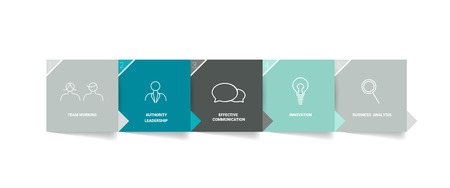Understanding the Power of Upskilling and Reskilling
In today’s fast-changing job market, one truth stands out: standing still means falling behind. The rapid pace of technological advancement and shifting industry demands have made lifelong learning more important than ever. That’s where upskilling and reskilling come into play—they’re not just trendy buzzwords, but essential strategies for anyone who wants to stay relevant and thrive in their career. Whether you’re seeking a promotion, contemplating a career change, or simply wanting to future-proof your skill set, investing in yourself through continuous learning can unlock doors you never imagined. By embracing new knowledge and developing fresh abilities, you create opportunities for exciting career transitions and growth. The willingness to learn is the secret sauce that sets go-getters apart in America’s competitive workforce. So, if you’re ready to take charge of your professional journey, upskilling and reskilling are your ticket to new possibilities and greater confidence in the face of change.
2. Identifying Your Goals and Transferable Skills
Before diving into new courses or certifications, it’s essential to get clear on where you want to go and what you already bring to the table. Setting your career objectives is like setting your GPS before a road trip—you’ll save time, avoid wrong turns, and feel more confident about your direction. Start by asking yourself key questions: What kind of work energizes me? What industries am I excited about? What values do I want my next job to reflect? When you define your goals, you’re better able to choose learning opportunities that truly move you forward.
Recognizing Your Transferable Skills
Your past experiences—whether in a different industry, volunteering, or even hobbies—have given you valuable skills that can be applied to new roles. These are your transferable skills, and identifying them is a powerful step in upskilling or reskilling. For example, if you managed projects in a retail job, those organization and leadership skills translate beautifully into tech, healthcare, or business management roles.
Common Transferable Skills
| Skill | Description | Applicable Careers |
|---|---|---|
| Communication | Clearly sharing ideas and information with others | Marketing, Customer Service, Teaching |
| Problem-Solving | Finding solutions to challenges quickly and effectively | Engineering, IT Support, Management |
| Project Management | Organizing tasks, teams, and deadlines for success | Tech, Healthcare, Nonprofits |
| Adaptability | Adjusting to new situations with a positive attitude | Startups, Sales, Consulting |
Mental Shift: From Self-Doubt to Self-Belief
The journey of upskilling is just as much about your mindset as your resume. It’s easy to underestimate what you’ve already accomplished. Take time to list your strengths and wins—even small ones count. With this clarity, you’ll not only choose the right courses but also show up with confidence when talking to potential employers or mentors. Remember: You’re building on a strong foundation—your unique experience—and every step forward is something to celebrate.

3. Researching In-Demand Skills for Your Target Industry
When you’re making a career pivot, one of the most empowering steps you can take is to thoroughly research what skills and certifications are truly valued by employers in your new field. The job market is constantly evolving, and understanding the pulse of your target industry gives you a real competitive edge. Start by diving into job postings on platforms like LinkedIn, Indeed, or Glassdoor—look for patterns in the requirements listed for positions you want. What software do they expect you to know? Are there specific certifications that keep popping up? Take notes; these insights are golden.
Tap Into Industry Reports and Thought Leaders
Don’t just rely on job ads. Explore industry reports from organizations such as the Bureau of Labor Statistics or professional associations related to your field. These resources highlight emerging trends and often outline which skills are projected to be most valuable in the coming years. Following thought leaders on social media or subscribing to relevant newsletters can also keep you informed about shifts in employer demands and hot new technologies.
Network with Professionals Already in the Field
One of the best ways to uncover what really matters is by connecting directly with people who are already working where you want to be. Attend local meetups, join online forums, or reach out for informational interviews on platforms like LinkedIn. Ask questions about their daily tasks, challenges they face, and which certifications or courses gave them an edge. Most professionals are happy to share their journey and offer advice—they’ve been where you are!
Validate Before You Invest
Before investing time or money into any course or certification, double-check its value in your chosen industry. Search alumni outcomes, check if employers list it as a preferred qualification, and read reviews from others who have completed the program. This due diligence helps ensure that every step you take is both strategic and impactful.
Remember: Upskilling isn’t just about collecting badges—it’s about intentionally building a toolkit that matches what employers need right now. By researching thoughtfully, you’ll set yourself up for success and walk confidently toward your new career path.
4. Evaluating and Choosing the Right Courses and Certifications
When it comes to upskilling or reskilling for a new career, choosing the right courses and certifications can make all the difference. In the American job market, not all programs are created equal, so its important to be intentional about your choices. Here are some practical tips to help you confidently navigate this process.
Do Your Homework: Research Reputable Programs
Start by researching programs that are well-regarded in your target industry. Look for courses offered by accredited universities, community colleges, or well-known online platforms like Coursera, Udemy, or LinkedIn Learning. Dont just rely on marketing—read reviews from past students and check graduation or certification rates.
Understand American Credential Standards
The value of a certification can vary widely in the U.S. Here’s a quick comparison to guide you:
| Credential Type | Description | Typical Use in U.S. |
|---|---|---|
| Certificate | Short-term program focused on specific skills | Entry-level positions or skill updates |
| Certification | Awarded after passing an exam by an industry-recognized body | Professional advancement or meeting legal requirements (e.g., CompTIA, PMP) |
| Degree | Associate’s, Bachelor’s, or Master’s from accredited institutions | Comprehensive education for career shifts or promotions |
Prioritize Flexibility to Fit Your Lifestyle
If you’re balancing work, family, and personal growth, flexibility is key. Many reputable programs now offer asynchronous online learning so you can study at your own pace. Consider hybrid options if you want some in-person interaction but need the convenience of remote study.
Checklist: What to Look for in a Course or Certification
- Accreditation by a recognized authority (regional or national)
- Industry partnerships or endorsements
- Practical, hands-on learning opportunities (projects, labs, internships)
- Job placement assistance or career services
- User-friendly online platform and tech support
Your Next Step: Take Action!
The path to a new career starts with one well-chosen course or certification. Stay curious, ask questions, and invest in programs that align with your goals and lifestyle—your future self will thank you!
5. Maximizing Your Learning and Networking Opportunities
When youre upskilling or reskilling for a new career, your learning experience shouldnt stop at the course material. In todays fast-moving professional world, the real magic happens when you step outside of your comfort zone and actively seek connections and practical experiences. Here are some strategies to help you make the most of your journey:
Connect with Industry Professionals
Reach out to people who are already thriving in your desired field. Platforms like LinkedIn, industry forums, and alumni networks can be goldmines for making authentic connections. Don’t be afraid to send a thoughtful message or request an informational interview—most professionals remember what it was like to start fresh and are happy to share insights.
Join Learning Communities
Learning is more powerful when shared. Join online groups, attend virtual meetups, or participate in local workshops related to your chosen path. Engaging with peers keeps you motivated, exposes you to diverse perspectives, and helps you stay updated on industry trends. Communities like Meetup, Slack channels for specific skills, or even Facebook Groups can offer support and accountability as you grow.
Practice New Skills in Real-World Settings
Theory is important, but nothing builds confidence like hands-on experience. Look for opportunities to apply your new skills through volunteer work, internships, freelancing gigs, or personal projects. Not only will this boost your resume, but it also helps you develop problem-solving abilities that employers value.
Stay Curious and Keep Showing Up
Your journey doesn’t have to be perfect—what matters is persistence and openness to learning from every opportunity. By connecting with others and putting your skills into action, youll transform knowledge into confidence and set yourself apart in your new career path.
6. Showcasing Your New Skills to Employers
Now that you’ve invested time and energy in upskilling or reskilling, it’s crucial to effectively communicate your new value to potential employers. In today’s competitive job market, how you present yourself can make all the difference. Here’s how to update your resume, LinkedIn profile, and personal branding materials to highlight your commitment to growth and readiness for a new career path.
Refresh Your Resume With Confidence
Your resume is your first impression, so make it count! Place your new courses and certifications in a prominent section—don’t just tuck them away under “Additional Information.” Use bullet points to describe the specific skills you learned and any hands-on projects or results you achieved. If you’ve pivoted industries, include a short summary at the top explaining your motivation and how your newly acquired expertise makes you a great fit for your target role.
Level Up Your LinkedIn Presence
LinkedIn is where recruiters go to scout talent, so make sure your profile reflects your growth mindset. Add your new credentials under “Licenses & Certifications” and integrate keywords from job descriptions in your headline and summary sections. Share posts about what you’ve learned or even write short articles reflecting on your upskilling journey—this not only shows technical knowledge but also demonstrates initiative and thought leadership.
Build a Strong Personal Brand
Your personal brand goes beyond just resumes and profiles—it’s the story you tell about who you are as a professional. Update your elevator pitch to mention your commitment to continuous learning and adaptability. Consider creating a digital portfolio or blog to showcase relevant projects or insights. Attend industry events (in-person or virtual) and introduce yourself with confidence, emphasizing both your fresh skills and your proactive approach to career growth.
Prove You’re Ready for What’s Next
Employers want people who embrace change and aren’t afraid of challenges. When interviewing, don’t shy away from talking about why you chose to upskill or reskill; share specific examples of how these new abilities empower you to add value in their organization. Your willingness to learn signals resilience and vision—qualities that American companies value highly in today’s fast-evolving workplace.
Final Thoughts: Own Your Growth Story
The journey of upskilling or reskilling is more than just checking boxes; it’s about stepping into the best version of yourself. By strategically showcasing your new skills across all professional touchpoints, you’re not only proving what you know—you’re showing employers that you have the drive, mindset, and adaptability needed to thrive in a brand-new career chapter.

